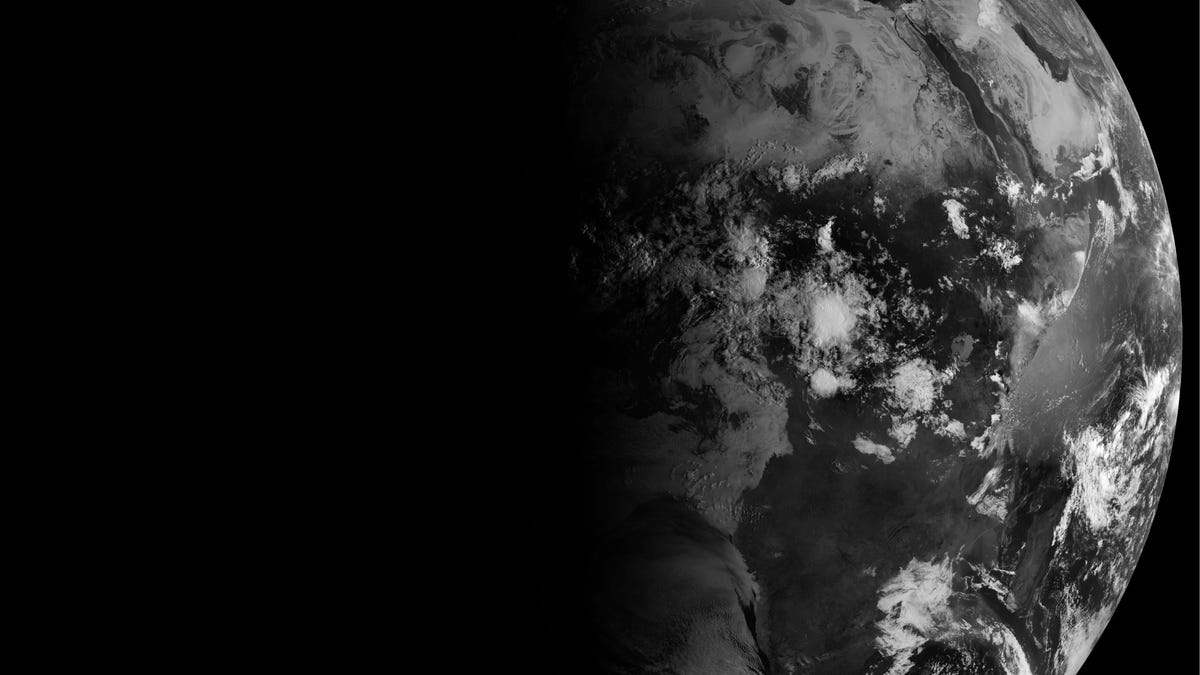How to Actually See the September Equinox This Weekend
It's an important annual milestone: autumn equinox north of the equator and spring equinox to the south.

Earth at September equinox, as seen from space.
The September equinox arrives on Saturday morning (late Friday PT), signaling a shift in seasons.
The fact that the September and March equinoxes, along with December and June solstices, happen at the same time each year suggests the milestones have something to do with Earth's year-long journey around the sun. And, of course, they do, but there's more going on.
On the equinox the sun appears directly over the equator, which means that daylight and nighttime hours are roughly equal around the globe, hence the word equinox.
But if you picture a diagram of the solar system with all the planets in the same plane orbiting the sun endlessly, you might ask why it isn't equinox every day instead of just two days a year? This is because of a weird quirk of our world, which is that Earth doesn't rotate on its axis straight up and down; instead the planet is tilted by 23.5 degrees.
This is actually what gives us our seasons. When Earth is at the point in its orbit where the north pole is tilted toward the sun, that's summer in the northern hemisphere and also the time of year when the sun is higher in the sky. The moment when the sun is highest in the sky in the north is the June solstice. When it's lowest in the sky in the north and highest in the south, that's the December solstice.
The equinoxes are the midway points between the two solstices, the moment Earth crosses the point in its orbit when one hemisphere begins to receive more sun than the other. Or, astronomically speaking, the moment one of Earth's poles transitions to be closer to the sun than the other. This happens next at 11:50 p.m. PT Friday, which will be Saturday morning or afternoon for much of the rest of the world.
How do I see it?
An equinox is really just a milestone along our 365.25-day journey around the sun, but there are a few ways to see it, kind of.
No matter where you are on Earth on equinox day, the sun will rise as close to due east and set as close to due west as it ever will. It's the one day the sun is a pretty foolproof compass. This makes the equinox a handy day for wayfinding. If you go outside at sunrise Saturday, take note of any landmarks directly in front of the sun as it rises. Now you'll know with confidence that those landmarks are due east from your location. Same goes for anything in front of the setting sun in the west.
Pay close attention and you'll notice something else about an equinox sunrise and sunset -- they go by more quickly than on any other day of the year. Because the sun is rising due east and setting almost perfectly west, it's also coming up and going down at the steepest angle of the year. This means it takes fewer seconds for the full disc of the sun to emerge above the horizon and then disappear below it again in the evening.
The actual difference between the fastest sunset and the slowest sunset, which is -- you guessed it -- on the solstice, is only about 30 seconds at middle latitudes. In other words, an equinox sunrise is faster by about one-sixth compared to a solstice sunrise. Try timing it and marking it on your calendar and then doing the same in three months at the next solstice.

